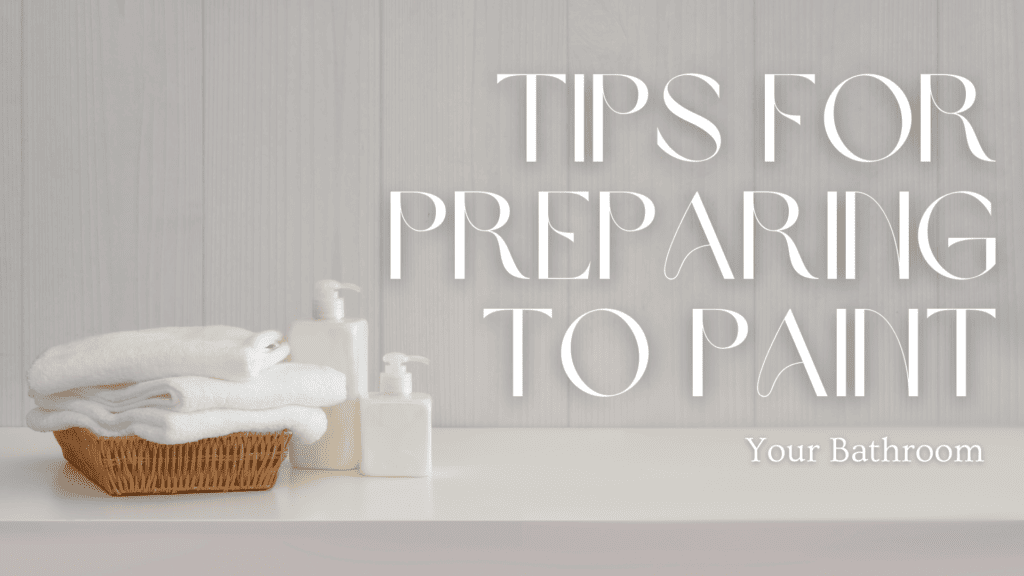Tips For Preparing To Paint Your Bathroom in Hamilton, Ontario
Proper bathroom maintenance is important, especially since this is a place where we do our various basic hygiene practices – and one of the most transformative forms of home interior maintenance is through a painting project.
To ensure a successful project, the preparation process leading to the project is crucial, especially since a lack of preparation could lead to abysmal results.
So, if you are currently gearing up for your upcoming bathroom painting project, here’s something you should check out!
Here are Tips For Preparing To Paint Your Bathroom.
1. Get The Right Kind of Paint
In any painting project, you will have to acquire the right kind of paint specially formulated for the space and surface you’re going to be painting – and the same goes for your bathroom painting project.
Given the high humidity and frequent moisture exposure in bathrooms, it’s important to go with a kind of paint specifically formulated for this environment.
You should look for moisture-resistant or mold-resistant paints designed to withstand the environment of a bathroom.
Aside from the kind of paint, you should also be mindful of the kind of paint finish you’re going to be using for your bathroom.
Semi-gloss or satin finishes are ideal for bathrooms as they provide a durable, easy-to-clean surface that stands up well to moisture and condensation.
2. Prepare the Surface
As a part of your preparation process, you should always prepare the surface you’re going to be painting – a process that is called surface preparation.
Proper surface preparation is important for a lot of reasons; it ensures that your surface is clean and free of any contaminants that might compromise your coat of paint, and is essential for achieving a smooth and long-lasting paint finish.
Over time, your bathroom interior will have acquired all sorts of muck, which is the exact kind of thing you’re looking to remove in your surface preparation process.
Begin by thoroughly cleaning the walls to remove any dirt, grease, or mildew – a mixture of warm water and mild detergent works well for this task.
Then, be sure to rinse the walls thoroughly and allow them to dry completely before proceeding.
If you encounter any mold or mildew, treat the affected areas with a mildew-killing solution and allow it to dry completely before painting.
3. Repair Any Damage
Another essential part of your surface preparation process is repairing any damage to your bathroom interior.
Repairing any possible damage on your bathroom interior is crucial to ensuring a smooth paint finish, and essentially a successful painting project.
To do this, inspect the interior thoroughly, and repair any damage using a high-quality spackling compound or patching material.
Once the repairs are complete, sand the patched areas smoothly and feather out the edges to ensure a seamless finish.
For larger holes or damage, consider using a self-adhesive mesh patch for added reinforcement.
While it may seem easier to just paint over these damages, remember that paint won’t be able to completely cover up or repair structural damages – if anything, neglecting these damages will just be a leeway for bigger damages in the future.
4. Protect Fixtures and Surfaces
Before you break out the paintbrushes, be sure to protect fixtures, trim, and other surfaces from accidental paint splatters and spills.
You must remember that you’re going to be working with paint, and with it comes the inevitable mess – in the form of splatters, spills, drips, and other kinds of mess.
So, to counter this, make sure to cover necessary areas such as your countertops, sinks, and flooring with drop cloths or plastic sheeting to prevent mess or damage.
To avoid getting smudges when painting over your corners and edges, use painter’s tape to mask off areas that you want to protect, such as trim, baseboards, and light fixtures.
Additionally, remove any hardware, such as towel bars or outlet covers, that could get in the way or be damaged during the painting process.
5. Ventilate the Space
Lastly, before jumping right into your bathroom painting project, you should remember to properly ventilate the space.
Proper ventilation is essential, especially since using paints and primers tends to emit fumes – and in painting a small space such as your bathroom, this is even more crucial.
Before you begin painting, open windows and doors to allow for adequate airflow and ventilation.
Consider using a fan to help circulate the air and expedite the drying process.
If your bathroom has a ventilation fan, be sure to turn it on during and after painting to help remove excess moisture and fumes from the room.
Proper ventilation not only ensures a more comfortable painting experience but also helps to prevent moisture buildup, which can lead to mold and mildew growth over time
If you need painting services in Ontario, contact DW Painting & Wallpapering Inc. to get the best results.
We are the premier Residential Painting and Wallpapering contractors in the Greater Hamilton area and have been beautifying homes in the Greater Hamilton and Burlington area for over 20 years.
Related: Paint Color Ideas For A Warm and Cozy Bedroom in Burlington, Ontario
Fence Painting Tips To Ensure Less Mess in Hamilton, Ontario


